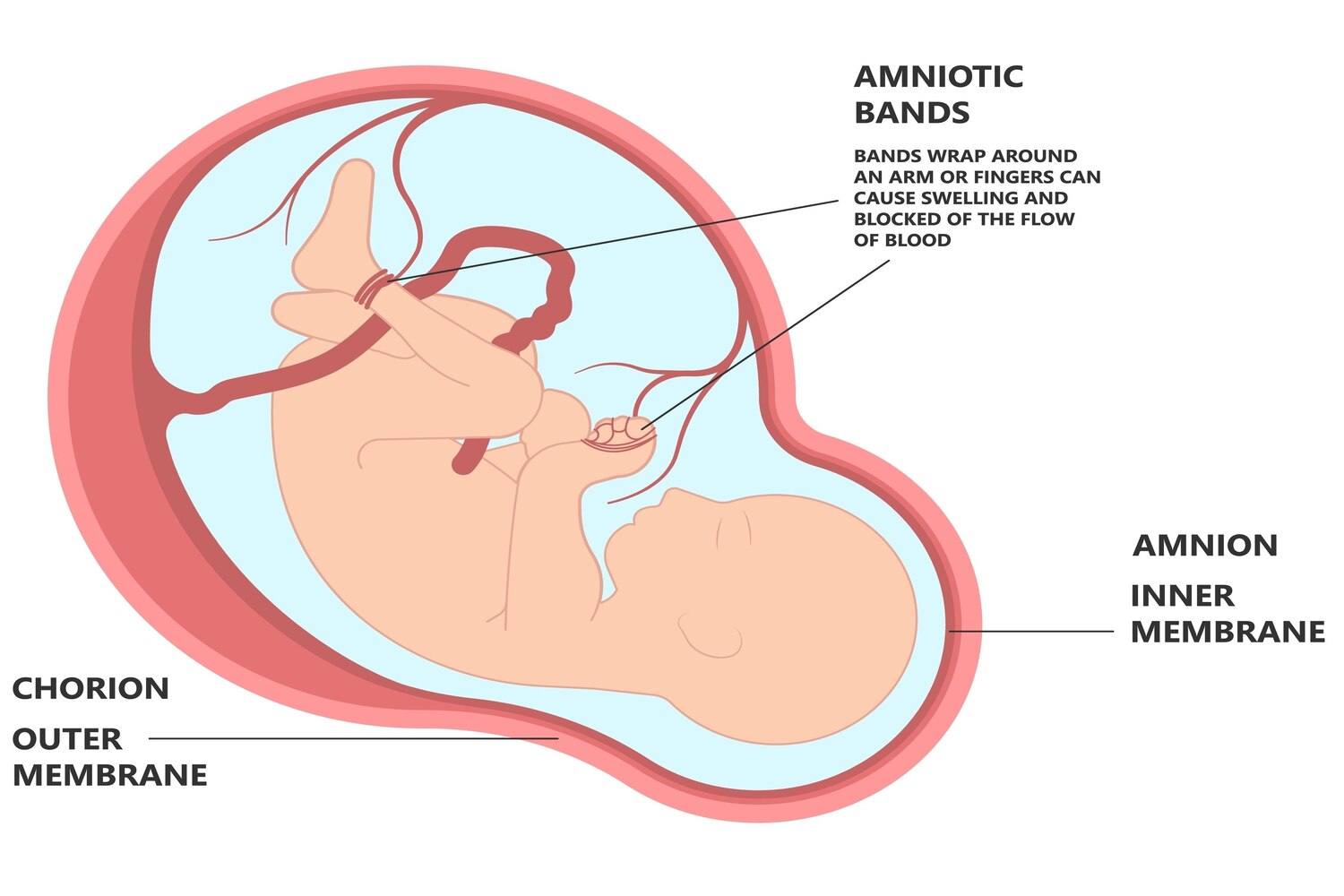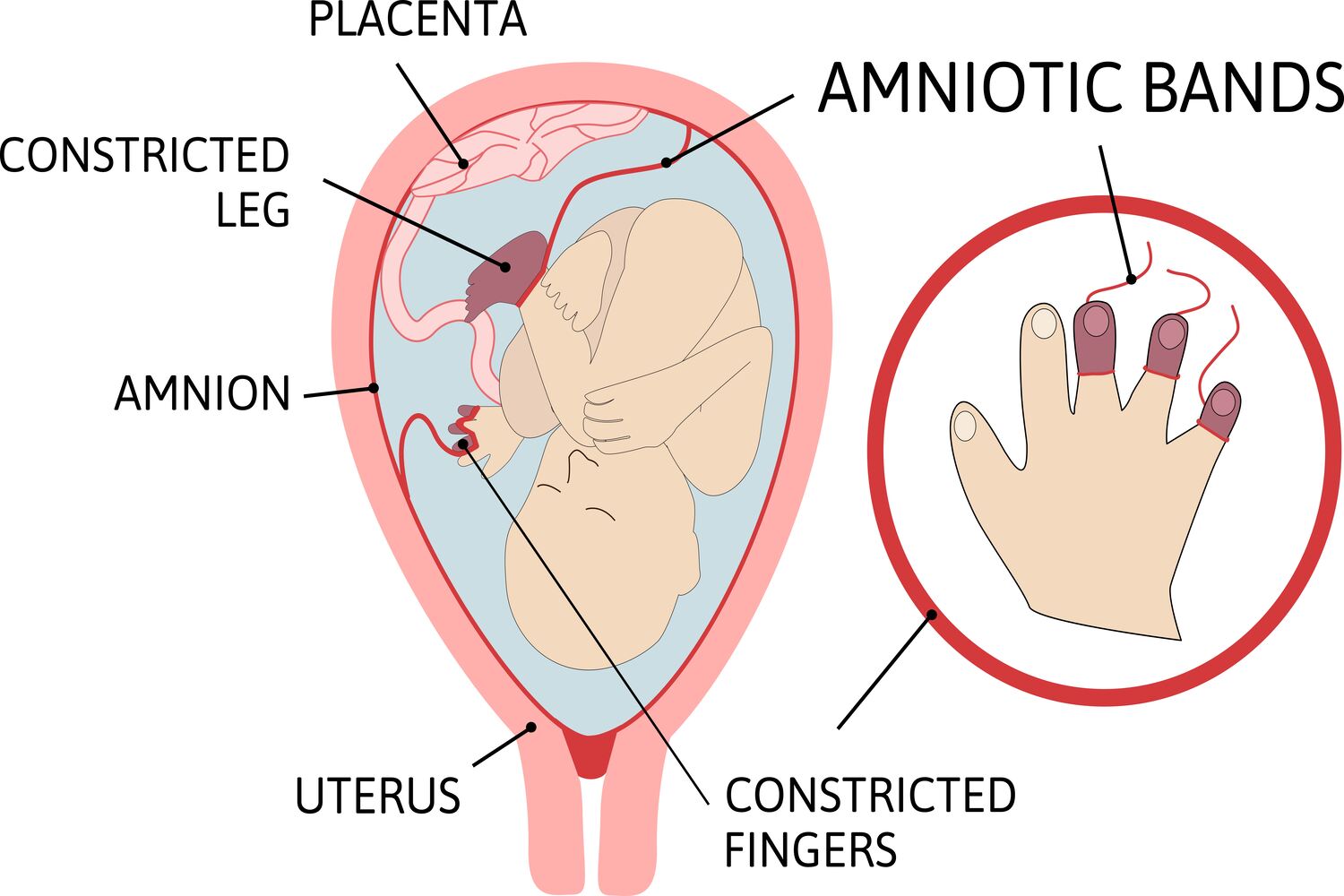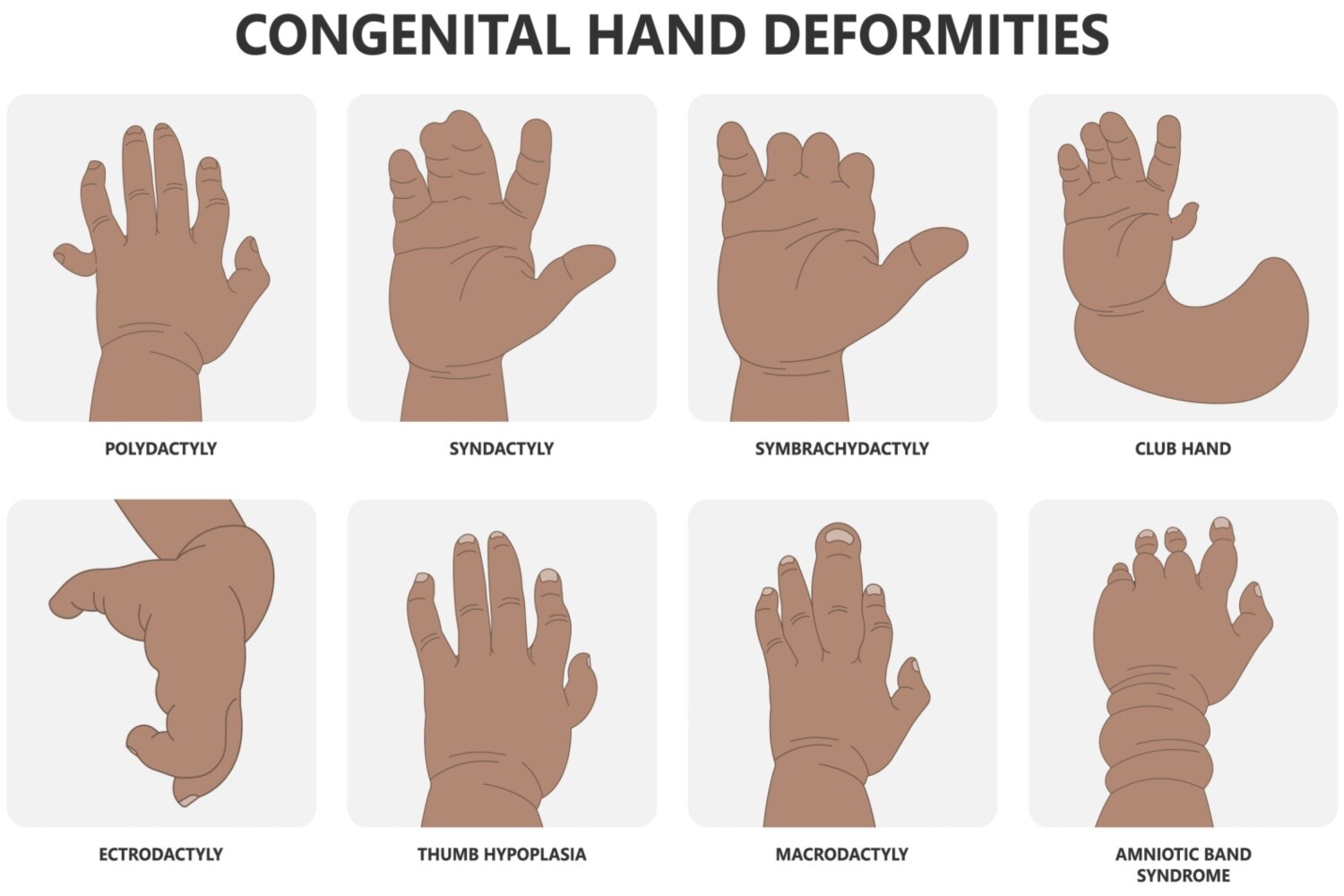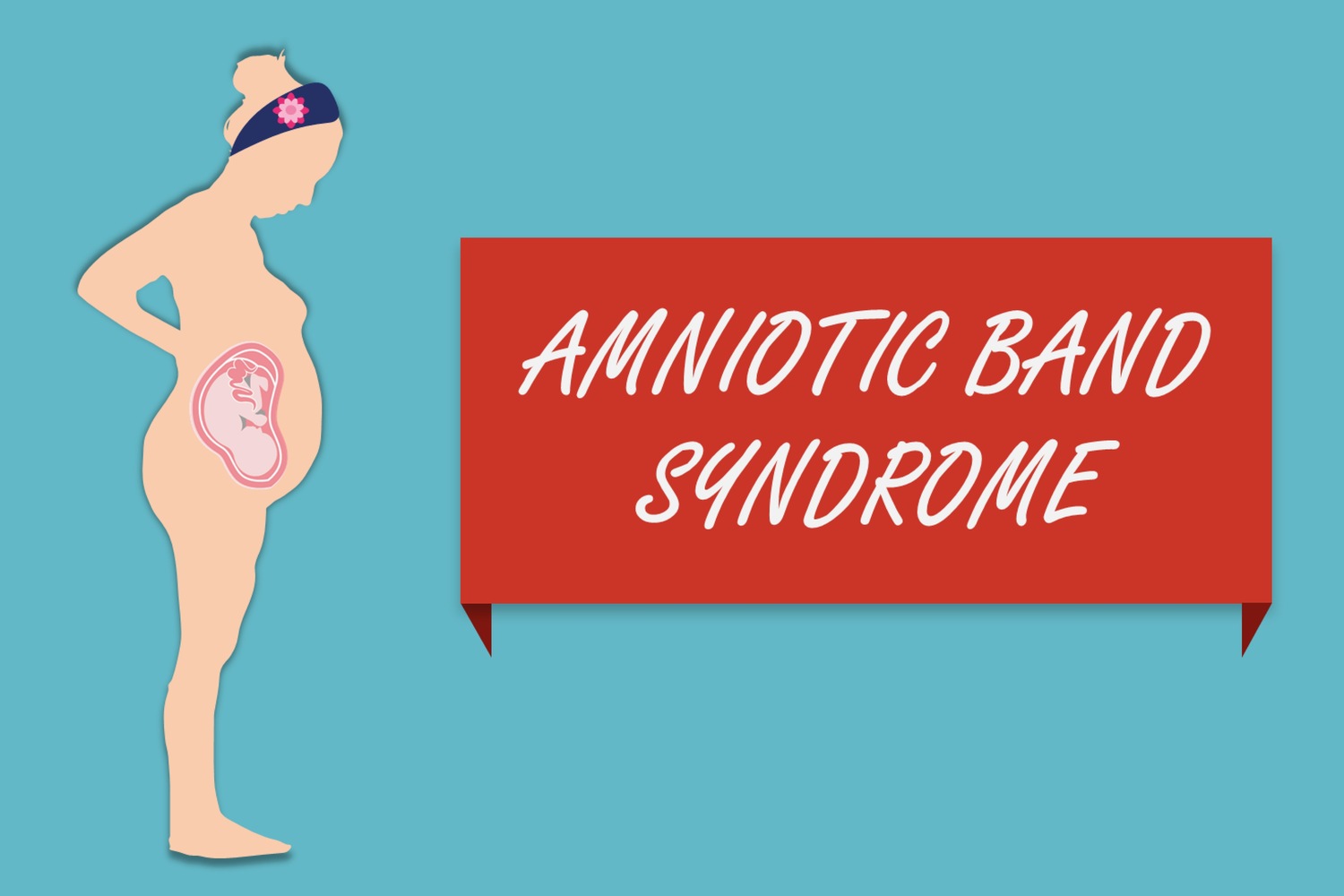
Pregnancy is the most crucial phase of a woman’s life and the whole life of the to-be mother undergoes many changes in the phase of these nine months of pregnancy. There are many diseases and complications that a pregnant lady can undergo during this time. Here we discuss one of those complications- Amniotic Band Syndrome (ABS), a major state in which the fetus gets entwined with amniotic cords, this condition can hamper the growth and development of the coming baby.
This happens because once the baby gets tangled in the amniotic strings, the blood supply gets curbed to all other body parts. This can even be dangerous as it is potentially associated with a variety of different birth defects or deformations of the head, foot, facial, toe, hands, etc. Generally how dangerous this is to the baby depends on where strands are located and how tightly they are entangled around the baby’s body part.
In This Article
- What Is Amniotic Band Syndrome?
- What Leads To Amniotic Band Syndrome?
- Risk Factors For Amniotic Band Syndrome
- What Causes Amniotic Band Syndrome?
- Signs Of Amniotic Band Syndrome
- How Is Amniotic Band Syndrome Diagnosed?
- How Is Amniotic Band Syndrome Treated?
- How Will Abs Affect The Long-Term Health Of My Baby?
- 6 Major Complications of Amniotic Band Syndrome
- Managing ABS in Pregnancy
- Special Considerations During Delivery With ABS
- FAQ’s
What Is Amniotic Band Syndrome?
Amniotic band syndrome (ABS) is a condition that happens when something goes wrong during pregnancy. It occurs when thin strands of tissue, called amniotic bands, form inside the sac that surrounds the baby in the womb.
These bands can accidentally wrap around parts of the baby’s body, like arms, legs, or fingers. This can lead to problems with how those body parts grow. Sometimes, the bands can even wrap so tightly that they cut off blood flow, which can be very serious (1).
ABS can cause different types of problems. Sometimes, it might affect how a body part looks, like making a finger shorter or causing a gap in the skin. Other times, it can lead to more serious issues, like limbs not growing properly or even losing them. Doctors usually find ABS when a baby is born, but they can sometimes see signs of it during pregnancy with special tests like ultrasound.
ABS is not just one thing—it’s more like a collection of different problems that happen because of those bands. That’s why it’s sometimes called by different names. But no matter what it’s called, it’s important for doctors to watch out for it and try to help babies who are affected by it (2).
What Leads To Amniotic Band Syndrome?
 The amniotic sac has two layers, the amnion, and the chorion. The amnion and the chorion amnion are very thin and even though technically separate from one another, they seem to attach to one another. Of the two layers, the amnion is closest to your baby. Due to some unidentified reasons, very rarely some parts of amnion break and start to float in the amniotic fluid where the developing fetus is also floating. These floating strands or tissues or bands from the ruptured amnion thus have an increased chance to entangle around the floating fetus (3).
The amniotic sac has two layers, the amnion, and the chorion. The amnion and the chorion amnion are very thin and even though technically separate from one another, they seem to attach to one another. Of the two layers, the amnion is closest to your baby. Due to some unidentified reasons, very rarely some parts of amnion break and start to float in the amniotic fluid where the developing fetus is also floating. These floating strands or tissues or bands from the ruptured amnion thus have an increased chance to entangle around the floating fetus (3).
Risk Factors For Amniotic Band Syndrome
Amniotic Band Syndrome typically occurs sporadically and randomly, and specific risk factors for its development are not well understood. However, certain factors may increase the likelihood of ABS, including maternal age over 35, maternal smoking during pregnancy, maternal substance abuse, and certain medical conditions such as uterine abnormalities or infections during pregnancy (4).
What Causes Amniotic Band Syndrome?
 Amniotic band syndrome (ABS) is a complex congenital condition with a multifactorial etiology. While the exact cause is not fully understood, several theories have been proposed:(1)
Amniotic band syndrome (ABS) is a complex congenital condition with a multifactorial etiology. While the exact cause is not fully understood, several theories have been proposed:(1)
Early Rupture of the Amniotic Sac
Some researchers suggest that ABS may result from an early rupture of the amniotic sac, leading to the formation of fibrous bands that can entangle fetal body parts.
Vascular Disruption
Another hypothesis is that ABS arises from disruptions in fetal blood flow caused by the entanglement of amniotic bands.
Genetic Factors
While most cases of ABS are sporadic, some evidence suggests a possible genetic component in certain cases.
Signs Of Amniotic Band Syndrome
Amniotic Band Syndrome presents with a spectrum of birth defects ranging from limb abnormalities to severe craniofacial malformations, impacting both physical development and overall health (3). There are 3 main patterns:
Limb Abnormalities
One or more limbs affected, often with finger/toe deformities.
Limb-body-wall Complex
Severe condition where organs protrude through abdominal/chest wall openings, with arm/leg defects.
Craniofacial Abnormalities
Including cleft palate, facial clefts, small eyes, and skull malformations.
Most ABS infants have finger/toe deformities, with upper limbs more affected. Features include short/missing fingers/toes, fused digits, and constriction rings.
How Is Amniotic Band Syndrome Diagnosed?
 Identifying amniotic band syndrome (ABS) before birth typically poses challenges, although there are instances where ultrasound scans may detect it. More commonly, ABS is diagnosed postnatally through a thorough physical examination of the newborn by healthcare professionals (1) (2).
Identifying amniotic band syndrome (ABS) before birth typically poses challenges, although there are instances where ultrasound scans may detect it. More commonly, ABS is diagnosed postnatally through a thorough physical examination of the newborn by healthcare professionals (1) (2).
How Is Amniotic Band Syndrome Treated?
Amniotic band syndrome (ABS) presents unique challenges in both prenatal and postnatal care. Treatment options aim to address the constriction caused by the amniotic bands and mitigate resulting deformities (1) (2). Here’s what you need to know about managing ABS:
Fetal Surgery
When ABS is detected prenatally and poses a risk of severe damage, fetal surgery may be considered. This delicate procedure involves using operative fetoscopy to visualize and release the constricting bands, preventing further harm to the developing fetus. Success depends on the extent of damage already inflicted, but early intervention can resolve swelling and promote normal limb development.
Postnatal Treatment
Following birth, treatment focuses on correcting any deformities caused by ABS. Plastic and reconstructive surgery are often necessary to repair affected limbs, with procedures tailored to the individual’s specific needs. Physical and occupational therapy play crucial roles in rehabilitation, helping individuals adapt to any functional limitations resulting from the condition. In cases of limb loss or dysfunction, prosthetics may be recommended to restore mobility and independence, with advancements in 3-D printing offering more customizable and functional options.
Decision-Making
Determining the most appropriate treatment approach requires a comprehensive assessment, including advanced imaging techniques like high-resolution ultrasound and MRI scans. These assessments help healthcare professionals evaluate the extent of damage and plan interventions accordingly, ensuring the best possible outcomes for individuals affected by ABS.
How Will ABS Affect The Long-Term Health Of My Baby?
 The long-term effects of Amniotic Band Syndrome (ABS) on a baby’s health can vary widely, ranging from minor to significant, depending on the severity and specific areas affected by the condition. While ABS is a rare condition, it can have significant implications for the affected child’s physical and psychological well-being (3).
The long-term effects of Amniotic Band Syndrome (ABS) on a baby’s health can vary widely, ranging from minor to significant, depending on the severity and specific areas affected by the condition. While ABS is a rare condition, it can have significant implications for the affected child’s physical and psychological well-being (3).
Physical Disabilities
ABS may result in various limb deformities, including missing fingers or toes, shortened limbs, or fused digits, which can impact the child’s mobility and ability to perform daily activities.
Functional Limitations
Children with ABS may experience functional limitations due to their limb deformities, such as difficulties with grasping objects, walking, or participating in certain activities
Psychological Impact
Living with visible physical differences may affect a child’s self-esteem and social interactions as they grow older, potentially leading to psychological challenges
Need for Medical Interventions
Some children with ABS may require ongoing medical interventions, including surgeries, prosthetics, or orthotic devices, to address limb deformities and optimize function
Developmental Delays
In severe cases where ABS affects multiple body systems, there may be developmental delays or cognitive impairments requiring specialized support and intervention
It is crucial for parents to work closely with healthcare professionals to monitor their child’s health, access appropriate medical care and interventions, and provide necessary support and resources to optimize their long-term well-being.
6 Major Complications of Amniotic Band Syndrome
Even though Amniotic Band Syndrome is very uncommon, and it can result in fetal deformities, it is not without its complications. Every pregnant lady is different and so are the complications and the seriousness (1). This syndrome can lead to major complications and some of them are enlisted as below:
- In this syndrome, the amniotic bands that wrap the hands, fingers or toes can lead to the amputation thus decreasing the numbers.
- The baby in the womb can be born with clubbed feet. In fact, there is a strong relationship between ABS and clubfoot. It can even cause clubbed hands.
- If the legs and arms get severely constricted, the chances of amputation are greater.
- If the amniotic bands are around the face of the baby, it can give rise to cleft palate. These complications can, however, be cured after the birth of the baby.
- Under severe circumstances, the amniotic bands can even lead to defects in the abdomen and even constrict the blood supply to the main organs.
- The most dangerous complication is when the bands get entangled around the neck or umbilical cord of the baby. If this happens it can lead to fetal death.
[Read : Understanding Birth Defects and their Symptoms]
Managing ABS in Pregnancy
 Amniotic Band Syndrome has led to serious complications during pregnancy. The medical practitioner needs to observe the condition very closely and then offer the best remedies for the prevention of any possible or further injuries. This syndrome is very rare but can be treated and managed during pregnancy. The amniotic band syndrome can be treated and managed in the following ways:
Amniotic Band Syndrome has led to serious complications during pregnancy. The medical practitioner needs to observe the condition very closely and then offer the best remedies for the prevention of any possible or further injuries. This syndrome is very rare but can be treated and managed during pregnancy. The amniotic band syndrome can be treated and managed in the following ways:
- Under a situation when the amniotic band touches the baby but causes no injury, surgery is not recommended.
- If the band is life-threatening for the baby and leads to acute facial deformities, a fetoscopy surgery is recommended.
This knowledge can further be enhanced by discussing with the doctor, who can suggest what is suitable for the respective mother-to-be and even the family.
[Read : Emergency C-Sections]
Special Considerations During Delivery With ABS
Amniotic Band Syndrome can lead to severe problems and complications. The mothers who undergo this syndrome in pregnancy need special care and considerations during the time of the delivery. Enlisted below are some of the important points that need to be borne in mind and the ones that are recommended by doctors are:
- In the case of Amniotic Band Syndrome, a cesarean section is recommended that must be discussed with the doctor beforehand.
- If the prenatal or intensive care reports indicate that the baby is doing fine, one can opt for the delivery at the hospital, yet one should be sure that the hospital has all the arrangements that are required by the new-born baby.
- Unless there are no complications, the delivery cannot be induced.
- Delivery can be done earlier only if there is a threat to the pregnancy.
Read Also: Polyhydramnios- Excessive Amniotic Fluid During Pregnancy
Thus, Amniotic Band Syndrome is a group of genetic defects that happen due to the entanglement of the fetal parts, could be feet, limb, etc. The baby can recover from these by proper treatment after they are born and, in most cases, the complications that arise from this syndrome are not life-threatening. Proper treatment at the right time can lead to improved functions of the deformed parts. One should only be cautious to not leave it untreated or it can prove to be troublesome for the baby, mother and could make things difficult for all.
FAQ’s
1. How Common Is Amniotic Band Syndrome?
Amniotic Band Syndrome (ABS) is considered rare, with an estimated incidence of about 1 in 1,200 to 15,000 live births. However, the exact prevalence may vary depending on factors such as geographic location, ethnicity, and the presence of underlying risk factors.
2. How Can I Prevent Amniotic Bands During Pregnancy?
Amniotic Band Syndrome (ABS) occurs due to random tearing of the amniotic sac, leading to the formation of fibrous bands that can entangle the developing fetus. As ABS is typically unpredictable and not preventable, there are no specific measures known to prevent its occurrence during pregnancy.
3. Can Babies Survive Amniotic Band Syndrome?
Babies with Amniotic Band Syndrome (ABS) can have different outcomes. In mild cases, where ABS affects soft tissues or causes minor limb issues, babies can live normal lives with medical help. But in severe cases, ABS can lead to stillbirth, newborn death, or serious problems that need ongoing care. It’s crucial for parents to work closely with doctors to understand the condition and get the right support for their baby.
4. Can Amniotic Band Disappear?
Amniotic bands themselves do not disappear once they form, but they can sometimes break or change shape. As pregnancy progresses, the bands may become less noticeable or cause fewer problems as the fetus grows and moves. However, persistent bands may still affect fetal development and may require medical attention.
References –
- Amniotic Band Syndrome
https://www.ncbi.nlm.nih.gov/books/NBK545283/ - Amniotic Band Syndrome
https://www.hopkinsmedicine.org/health/conditions-and-diseases/amniotic-band-syndrome - Amniotic Band Syndrome
https://rarediseases.org/rare-diseases/amniotic-band-syndrome/ - Epidemiology and risk factors of amniotic band syndrome, or ADAM sequence
https://www.ncbi.nlm.nih.gov/pmc/articles/PMC3530965/
